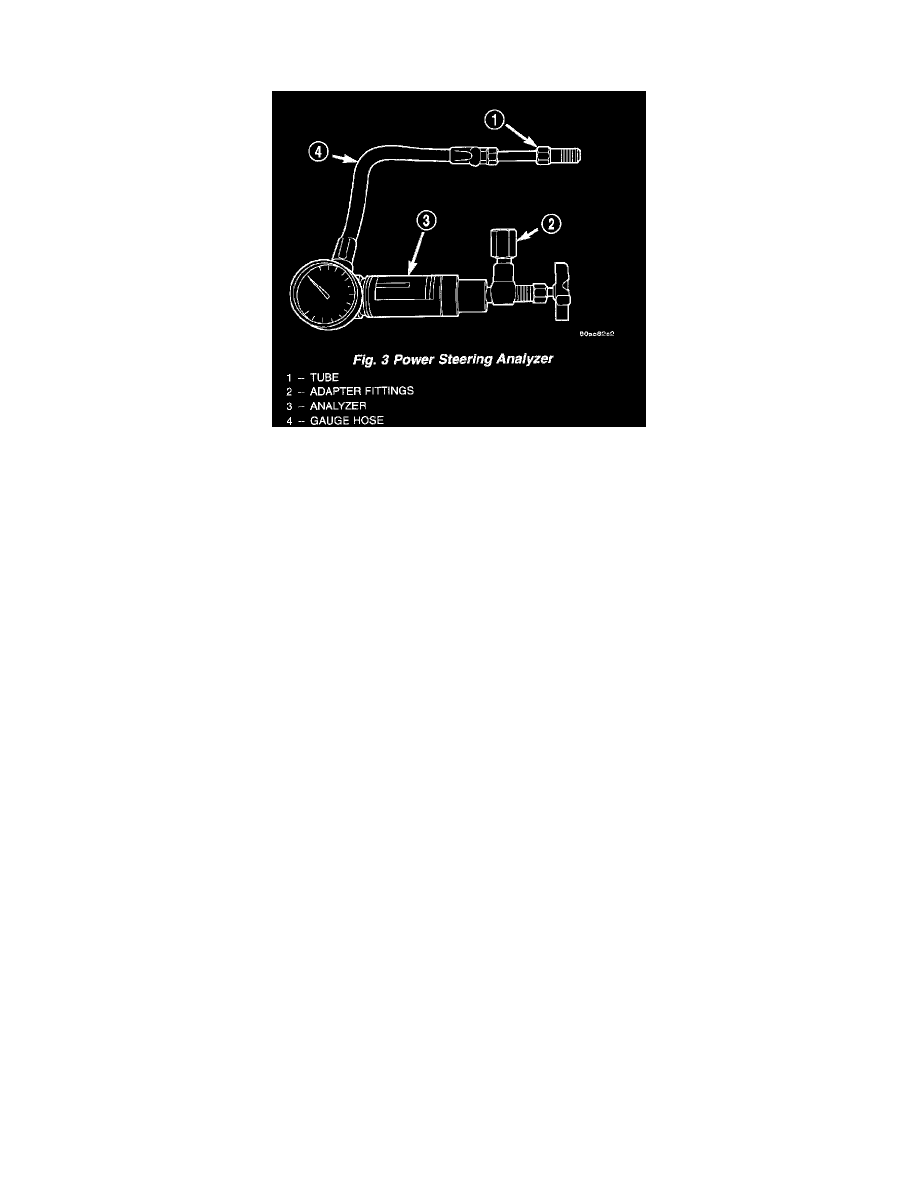Wrangler L6-4.0L VIN S (2000)

Power Steering Pump: Description and Operation
POWER STEERING FLOW AND PRESSURE
The following procedure is used to test the operation of the power steering system on the vehicle. This test will provide the Gallons Per Minute
(GPM) or flow rate of the power steering pump along with the maximum relief pressure. Perform test any time a power steering system problem is
present. This test will determine if the power steering pump or power steering gear is not functioning properly. The following pressure and flow test is
performed using Power Steering Analyzer Tool 6815 and Adapter kit 6893.
FLOW AND PRESSURE TEST
1. Check the power steering belt to ensure it is in good condition and adjusted properly.
2. Connect pressure gauge hose from the Power Steering Analyzer to Tube 6866.
3. Connect Adapter 6826 to Power Steering Analyzer test valve end.
4. Disconnect the high pressure hose from the power steering pump.
5. Connect Tube 6865 to the pump hose fitting.
6. Connect the power steering hose from the steering gear to Adapter 6826.
7. Open the test valve completely.
8. Start engine and let idle long enough to circulate power steering fluid through flow/pressure test gauge.
9. Shut off the engine and check the fluid level, add fluid as necessary. Start engine again and let idle.
10. Gauge should read below 862 kPa (125 psi), if above, inspect the hoses for restrictions and repair as necessary. The initial pressure reading should
be in the range of 345 - 552 kPa (50 - 80 psi).
11. Increase the engine speed to 1500 RPM and read the flow meter. The reading should be 2.4 - 2.8 GPM, if the reading is below this specification
the pump should be replaced.
CAUTION: This next step involves testing maximum pump pressure output and flow control valve operation. Do not leave test valve closed for
more than three seconds as the pump could be damaged.
12. Close valve fully three times for three seconds and record highest pressure indicated each time. All three readings must be above pump relief
pressure specifications and within 345 kPa (50 psi) of each other.
-
Pressures above specifications but not within 345 kPa (50 psi) of each other, replace pump.
-
Pressures within 346 kPa (50 psi) of each other but below specifications, replace pump.
13. Open the test valve and turn the steering wheel to the extreme left and right positions against the stops. Record the highest pressure reading at each
position. Compare readings to pump specifications chart. If pressure readings are not within 50 psi. of each other, the gear is leaking internally and
must be repaired.
CAUTION: Do not force the pump to operate against the stops for more than 2 to 4 seconds at a time because, pump damage will result.
